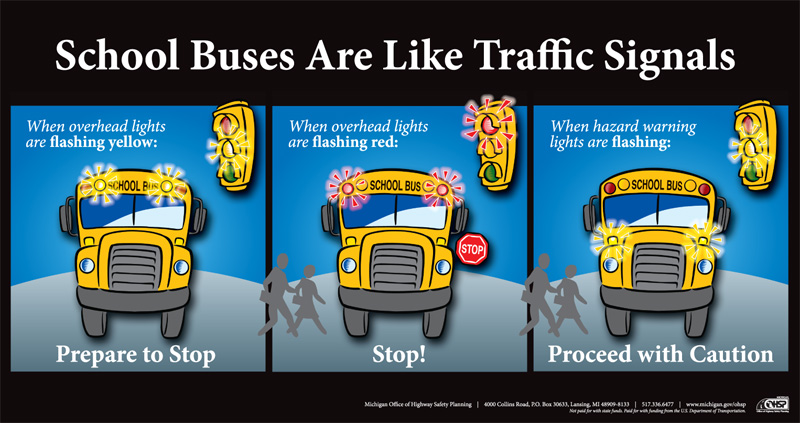Making sure everyone knows the rules of the road is of the utmost importance for the safety of pedestrians, bicyclists, and drivers alike. So we’d like to give a round of applause to the West Windsor police department, which, in response to an accident last week where a township teen was hit by a car after exiting a school bus, announced a new push to patrol bus stops and educate drivers on the right ways to drive near school buses dropping off kids.
If you’re a regular reader of this blog, you already know that Greater Mercer TMA is the New Jersey Department of Transportation’s designated Safe Routes to School coordinator for Mercer and Ocean counties, meaning that we work with schools, parents, communities, and law enforcement in our region to find ways to teach and encourage kids to walk and bike to school — and to make sure that they are able to do so in a safe and secure environment.
One of the facets of this is driver education, including teaching drivers how to behave around school buses (as the West Windsor police are doing) as well as educating drivers about how to behave in the vicinity of a school.
Each driver on the road contributes to or detracts from the safety of the walking and bicycling environment for children. Failure to comply with traffic laws and posted speed limits are examples of driving behaviors that result in unsafe conditions. According to a comprehensive SRTS guide developed by the Pedestrian and Bicycle Information Center:
- A National Safe Kids study of 27 cities found that of the vehicle speeds recorded during the 30 minutes before and after school, 65 percent of drivers exceeded the posted speed limit with 23 percent of these drivers traveling at least 10 mph above speed limit and 33 percent traveling 30 mph or more beyond the limit.[14]
- As vehicle speed increases so does the pedestrian injury severity and the likelihood of death. A pedestrian struck by a vehicle moving 20 mph has a 5 percent chance of dying. As vehicle speed increases to 30 mph and 40 mph, the likelihood that the pedestrian will be killed increases to 45 percent and 85 percent respectively. [15], [16]
- Along with speeding, failure to comply with stop signs and traffic signals also contributes to unsafe environments. A National Safe Kids study on driver behavior at intersections in school zones and residential neighborhoods found that 45 percent of drivers failed to completely stop at the intersection even though a stop sign was present, and of these, 7 percent did not even slow down for the sign. Although the study found that drivers were more likely to stop when a pedestrian was present compared to not present, 36 percent of drivers violated the stop signs when pedestrians were waiting at the curb to cross and 24 percent of drivers did not come to a complete stop at the intersection while pedestrians were crossing.[17]
- A study of crosswalks in school zones shows that approximately 30 percent of drivers stopped within or beyond the boundaries of crosswalks, thus blocking the pedestrian path.[18]
As part of Greater Mercer TMA’s Safe Routes to School work, we can help communities craft key messages for drivers near schools and near school buses, and provide strategies for reaching drivers who drive near schools. Interested in working with us to make your town safer? Contact us today.
Drivers traveling at safe speeds, yielding to pedestrians and cyclists, and stopping at stop signs and crosswalks help create a pedestrian and bicyclist-friendly environment. Bravo to the West Windsor police department for understanding the importance of education in keeping our kids and drivers as safe as possible.

